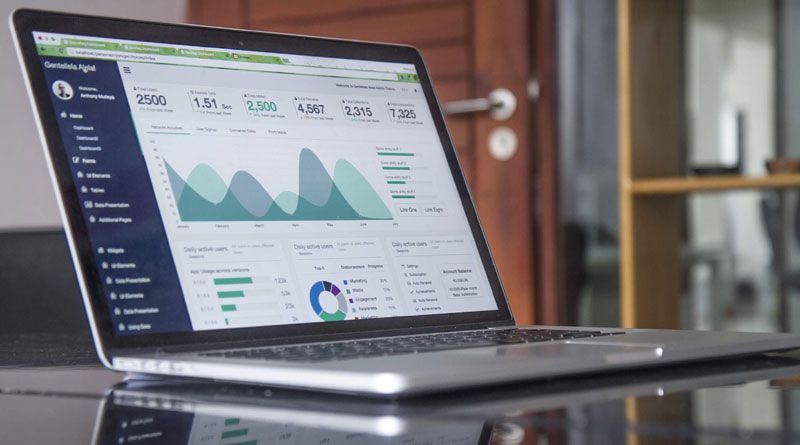Your assets are called ‘assets’ for a reason – they are valuable to your business, which is why it is vital that you know where they are, how they are doing, and whether or not they need to be supplemented, repaired or replaced.
Asset performance management software is a game-changer for many industries like mining, chemical and petrochemical etc. But, before you dive into acquiring it for your company, read on for four essential things to know about asset management software.
1. It is more important than most companies realize
Unfortunately, too many firms overlook the importance of asset management software, which only hurts them in the long run. In 2019, it is impractical for businesses around the world to still attempt to manage their equipment and inventory through manual processes. Gone are the days when employees need to hover over spreadsheets because they are tasked with the responsibility of maintaining these assets.
Generally, businesses who don’t have an asset management system in place tend to lose substantial amounts of money and time before they realize that something needs to be done. Don’t be like one of these companies!
After all, this manual system inevitably results in neglected items, broken equipment, human error, incorrect information, customer disappointment – and that is just the beginning. So, to avoid these avoidable issues, your company needs a more productive way to manage and track your assets and resources. This is where an asset management system comes into play.
2. There are different options
When it comes to selecting an asset management software, you should know from the beginning that there is a wide range of options from which you can choose. This can make it an overwhelming task; after all, how can you ascertain which one is going to bring the highest ROI for your company?
First and foremost, you want to ensure that you know the lifecycle of the assets and HR software of your firm. From there, look for a system that will provide real-time admittance to the numerous departments in charge of overseeing the resources across the business. In other words, you want to be introducing a system that works as a smooth communication channel among the stakeholders, buyers, and department heads.
Additionally, the only way to find the right asset management software for your firm is by knowing exactly your objectives and expectations. It is highly suggested that you arrange meetings to speak with relevant staff and IT personnel. Ask them for their thoughts on the subject which, in turn, will help you devise an accurate list of your firm’s top short and long-term objectives.
3. Prioritize certain features
While there may be a wide variety of options on the market, that isn’t to say that all of them are offering comparable services and features. In fact, there are asset management software systems that are way behind in what they can provide you with.
Obviously, you want your software to be cost-effective, while also giving you and your employees with peace of mind. But, it is just as essential to compare and contrast the features and user-friendliness of potential software options.
You certainly want your software to facilitate mobile apps and to be cloud- or web-based so that workers can access the information whenever and wherever they are.
Also, a user-friendly check-in/check-out feature can significantly enhance precision and decrease the necessary time allotted to these tasks. Auditing options are advantageous when you have to verify the amount and location of your assets, while customizable data fields and an ability to recover deleted assets keep you efficient throughout the year.
4. When in doubt, look for one that includes asset tagging
Generally, it is recommended that firms look into asset management software that includes asset tagging capabilities. Asset tagging enables you to assign tags to your physical resources (such as machinery, furniture, IT hardware, vehicles, and supplies), and then input and update information about said property. This type of functionality makes a significant difference when it comes to gathering, organizing, and maintaining this type of information.
Asset tagging ensures that you can easily monitor your resources and precisely identify needs, while also eliminating the risk of making wasteful purchases on unnecessary assets. As it is continuously updated, at any moment, you can get an accurate snapshot of the location of your assets. This is particularly helpful if they frequently move around your firm’s operations.
As asset tagging eradicates the need for people to monitor and log each item’s movements manually, you can be assured that your worker’s productivity is going to go through the roof. By having your assets tagged and recorded in an asset management software, you are taking significant steps to streamline your entire process and to increase overall efficiency while you are at it. This process is utilized in many different niches, including evidence management software used by the police.
Does your firm currently use asset management software? If so, what benefits have you seen since its implementation? How did you know you had found the right software for your firm? Alternatively, if you haven’t yet implemented it – what’s stopping you? Let us know your questions, concerns, and any relevant experiences in the comments below!
Mohammad Daudi is the Chief Revenue Officer at SGE Group International, a multidisciplinary group of companies with core business interests in Asset Lifecycle Management, Land Development and Software. Aladdin is SGE’s proprietary Asset Lifecycle Management software, designed to empower FM, Maintenance and Asset teams across multiple industry sectors.

